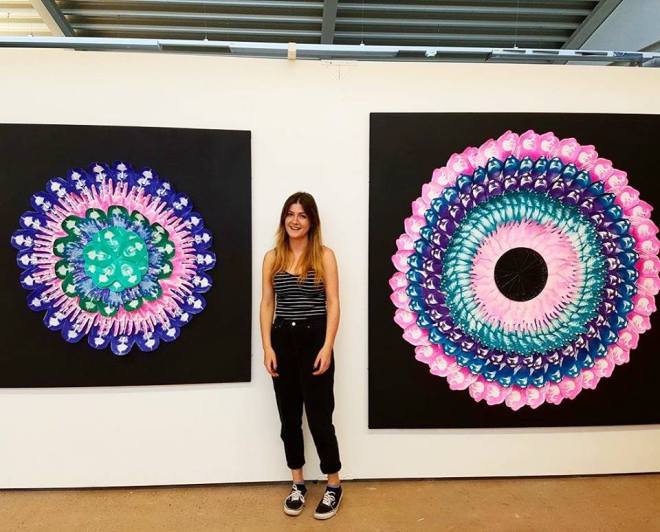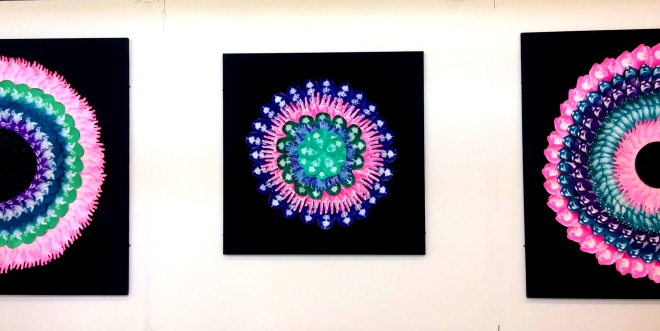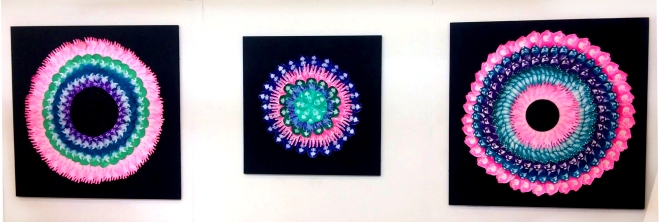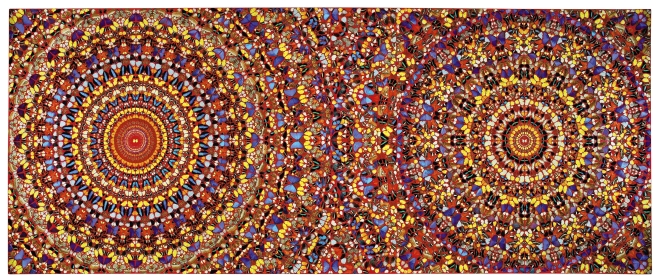
Category: Uncategorized
Artist Statement
The mind creates, the body reproduces. In the material reality, art objects are reproductions of the mind , a mind that uses the body as an organism to materialize ideas, patterns, and emotions. My work examines the need for artistic creation as a means of bridging the gap between our conscious and unconscious minds. Inspired by Jungian theory of Individuation, I explore the therapeutic necessity of art in the modern age. Integrating the symbolic nature of circular forms, found in ancient cultures through to today’s society, in conjunction with my own body parts as an expression and representation of the thoughts and feelings that may not be accessible through conscious effort. Resulting in a fuller understanding of the decisions we make in life through revealing manifestations of hidden thoughts, feelings, and motives.
Final Pieces





Website
Website Address – http://enfysradley.wix.com/enfysradleyfineart
Damien Hirst
Damien Hirst is a world renowned artist, whose work deals with an array of subject matter, and takes influences from some on modern art’s greatest artists, such as, Andy Warhol, Francis Bacon and Marcel Duchamp. He challenges the notion of modern art, for instance, his 1989 piece ‘The Physical Impossibility of Death in the Mind of Someone Living’, a piece that has become an iconic image of contemporary art. Consisting of a thirteen-foot tiger shark, which Hirst arranged to be caught off the coast of Queensland, Australia, and preserved in formaldehyde and contained within 3 glass and steel cubes. Explaining “I didn’t just want a lightbox, or a painting of a shark” Hirst’s intention was to force the viewer out of their element by introducing into a gallery setting, a shark that was “real enough to frighten you”.[2] By isolating the shark from its natural habitat, with the formaldehyde providing an illusion of life, the work explores our greatest fears, and the difficulty involved in adequately trying to express them. As Hirst states: “You try and avoid [death], but it’s such a big thing that you can’t. That’s the frightening thing isn’t it?

 Circular and symmetrical imagery has become an important theme within my work, it has come to symbolise a wholeness that can be create through creative outlets, and a gateway to connecting the conscious and unconscious mind. Something that Freudian and Jungian theory believe is the key to overcoming self destructive/ negative behaviours. Damien Hirst is an artist who has frequently used symmetrical repetition within his work to examine human spirituality/ the soul/ the psyche.
Circular and symmetrical imagery has become an important theme within my work, it has come to symbolise a wholeness that can be create through creative outlets, and a gateway to connecting the conscious and unconscious mind. Something that Freudian and Jungian theory believe is the key to overcoming self destructive/ negative behaviours. Damien Hirst is an artist who has frequently used symmetrical repetition within his work to examine human spirituality/ the soul/ the psyche.

Kaleidoscope Series
The above are piece from Hirst’s Kaleidoscope series, something which he continued for a number of years, made up of thousands of multicoloured butterflies placed into intricate geometric patterns into paint. Hirst uses butterflies in reference to the Greek symbolism of the butterfly representing the soul/ psyche.

Discussing his work Hirst – “I’ve got an obsession with death … But I think it’s like a celebration of life rather than something morbid.”[1] Something which circular forms have come to represent, a wholeness. Hirst decided to only use the wings and not the body of the butterfly, divorcing it from reality, creating an almost mythical/ dream like being. To me this is very symbolic of the conscious and unconscious mind, the perception of our consciousness, an accessible, very real part of human existence contrasting our unconsciousness where great creativity and mysterious inner working of the mind reside.
Capaneus Series
Leading on from Hirst’s Kaleidoscope series, is Capaneus a collection of pieces that use a variety of insects, butterflies, beetles arranged into intricate patterns and placed into gloss paint. The title derives from the Latin poem ‘Thebaid’ where Capaneus is struck down to earth by angered deities, the poem describes how he falls to the ground engulfed in flames, his lifeless body as immense as that of a giant, creating beauty out of tragedy. Similar to the irony of having to kill something to appreciate its beauty, referring to the use of insects within Hirst’s work.
Face circle 3
The occult – he word “occult” is generally associated with secret knowledge and practices dealing with the supernatural or “psychic” phenomena, often for the purpose of obtaining personal power. Some occult practices rely on demons or “spirits” to achieve their goals.
I feel my choice of expression within my self portraits in combination with the colours and circular gives off a sense of the occult. A journey of psychic exploration of the self.




head colours rep




Screen Printing




















